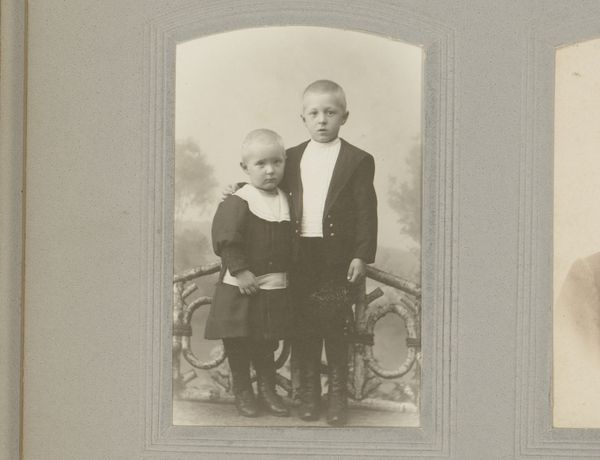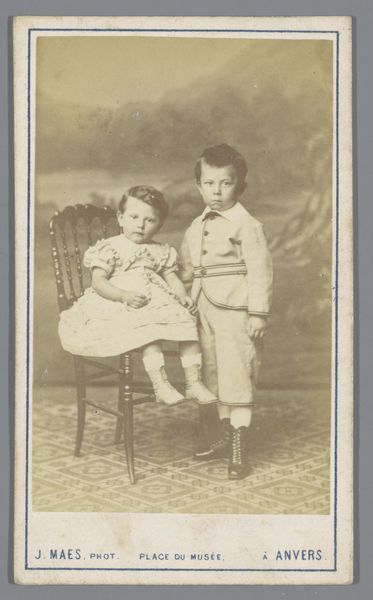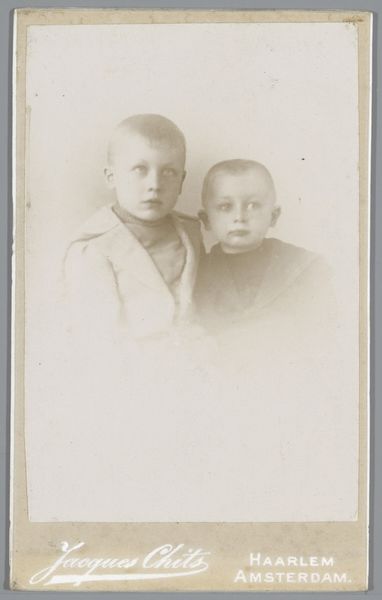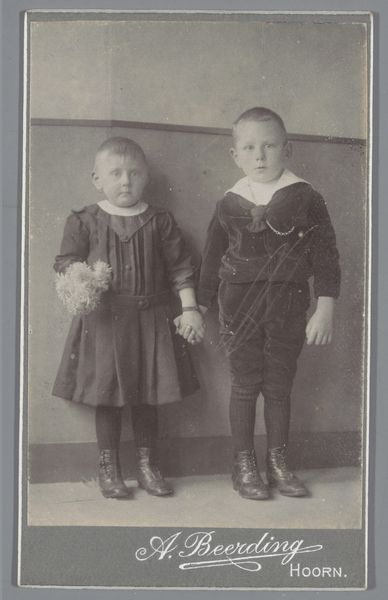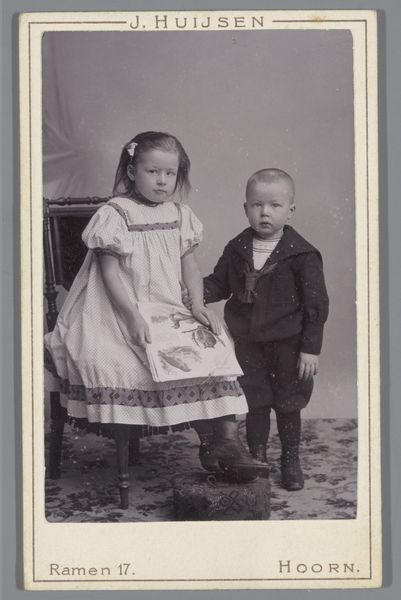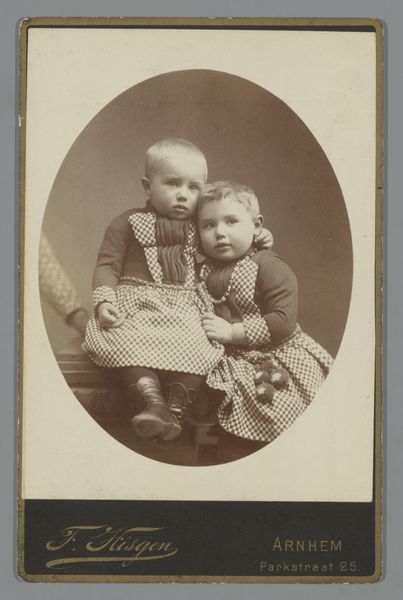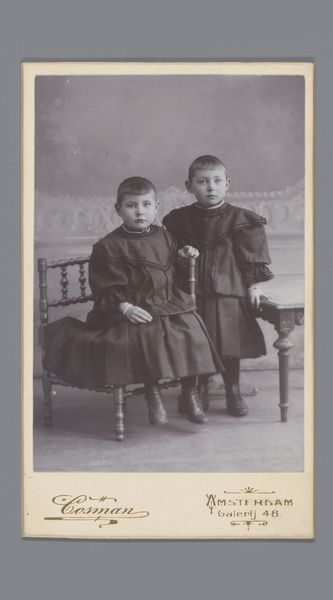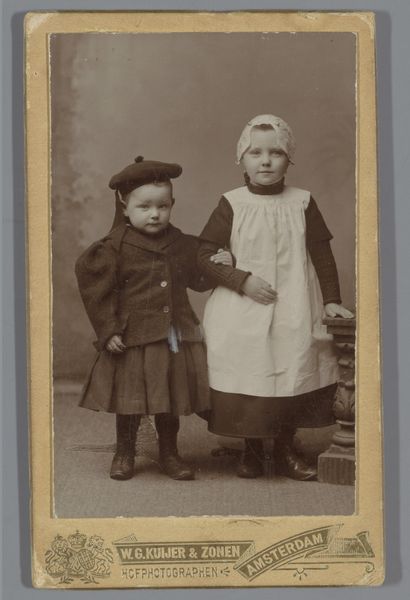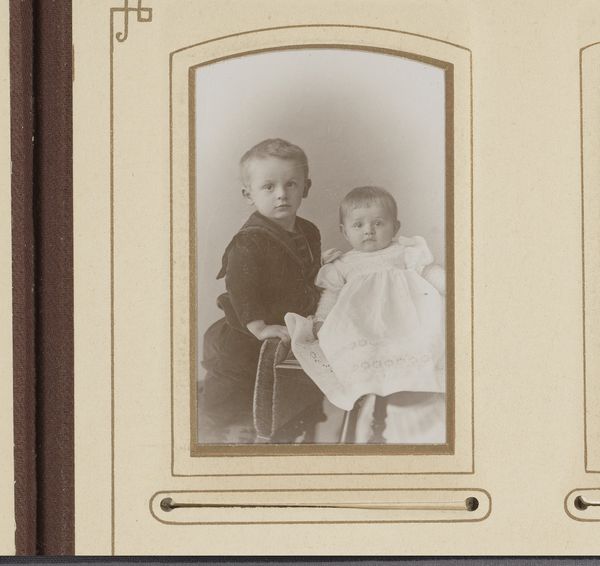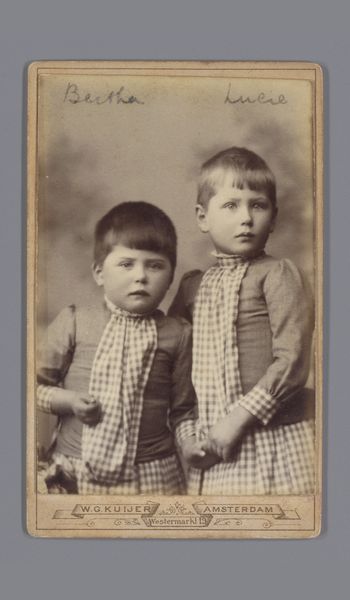
Portret van twee onbekende jongens, aangeduid als W. en K. Leegwater 1883 - 1910
0:00
0:00
johanneslaurenstheodorushuijsen
Rijksmuseum
print, photography
#
portrait
# print
#
photography
#
historical photography
#
historical fashion
#
genre-painting
Dimensions: length 104 mm, width 65 mm
Copyright: Rijks Museum: Open Domain
Curator: Welcome! Here we have a portrait photograph, “Portret van twee onbekende jongens, aangeduid als W. en K. Leegwater,” taken sometime between 1883 and 1910, by Johannes Laurens Theodorus Huijsen. Editor: It's captivating. There's a somber tone; a stark formality that’s so typical of these older portrait photographs. It feels distant, somehow… reserved. Curator: Indeed. Notice the attire: matching sailor suits, a common style for children at the time, referencing nautical themes, connecting these young sitters to ideas of trade, exploration, and perhaps a rising sense of national pride through maritime power. The pose also resonates; one boy seated on a fringed ottoman, the other standing protectively. Editor: The heavy fabrics and textures speak volumes, don’t they? Look at that intricate fringe, the way light reflects off the polished boots… it's about more than just clothing; it’s about presenting a specific image of status. Who produced these garments, these props? And how would the children's family have been situated socially, and economically? It’s about material culture, the weight of representation through manufactured goods. Curator: A cultural script being performed. Sailor suits had become emblems of bourgeois childhood, even innocence – carefully curated to project specific aspirations and values. I am always fascinated how a seemingly simple garment gains iconic significance through use. The very act of being photographed freezes them in time, encoding their identities with this naval connection, for better or worse, as it were a social signal for generations to see. Editor: It really begs the question about how photographic portraits were constructed during that era. This wasn't a spontaneous snapshot. The children were likely directed and arranged, revealing so much of the era's artistic and even industrial approach to representation. These clothes were mass produced; so in some sense the subjects became vehicles for something mass, even mundane. The clothes make them ‘historical’ just as much as their particular expressions or the lighting. Curator: An intriguing point, considering the rapid evolution of both photography and fashion then. Thanks, the weight these portraits carry deepens as a result. Editor: Agreed. It enriches our perspective immeasurably.
Comments
No comments
Be the first to comment and join the conversation on the ultimate creative platform.
